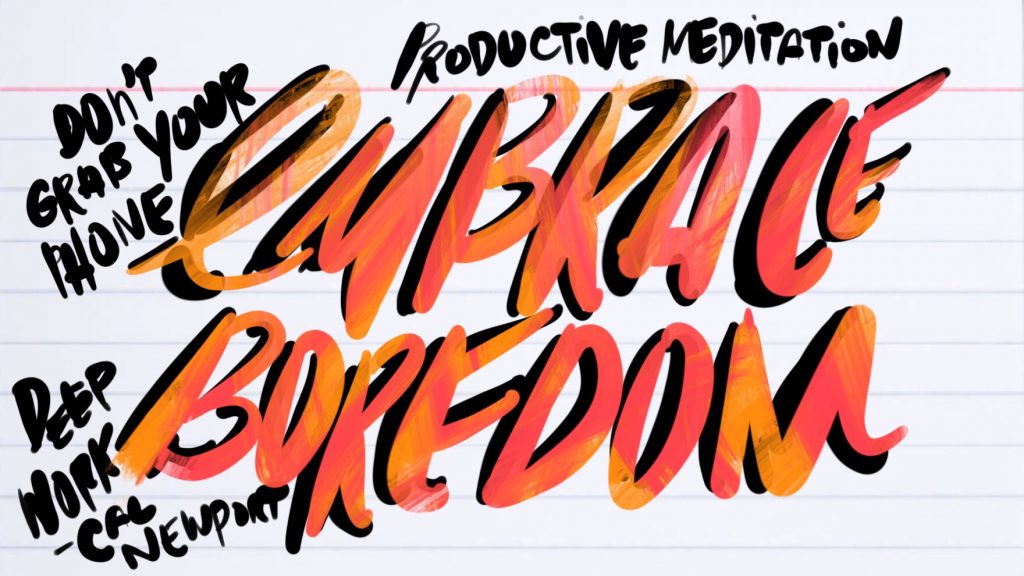You’re already thinking of other things to click to.
Resist the urge.
I’m already thinking of what newsletters might be sitting in my inbox. I’ll try to resist the urge.
Or, as Cal Newport suggests in Deep Work: embrace boredom.
If your goal is to focus deeply in your work, you’re going to hit walls. They can be boring. If, in the rest of your life, you grab your phone the moment you feel even a twinge of boredom, then that urge will appear when you hit a lull in your work.
Instead, build your mental muscle of focus
For regular muscular strength, you can (1) have focused workout sessions and also (2) get a few reps in throughout the day.
There are a few different terms for getting reps in throughout the day, but “greasing the groove” has always stuck for me. You lower the intensity but increase the frequency. If you want to increase your pull-ups, do an easy set every couple hours. You never go to failure.
Applying that to your mental muscle, you have a lot of small opportunities throughout the day to embrace boredom. In line? Don’t grab your phone. You just woke up? Don’t grab your phone. In between sets in your actual workout? Don’t grab your phone.
The volume will add up. It probably already has, in the bad way. That reflex to check your phone has built up over time. Now you’re going to slowly turn that ship around.
In Deep Work, Cal Newport explains the danger of the frequency of distraction:
It’s instead the constant switching from low-stimuli/high-value activities to high-stimuli/low-value activities, at the slightest hint of boredom or cognitive challenge, that teaches your mind to never tolerate an absence of novelty.
Given 20 minutes, consider these two scenarios:
- (A) You schedule a 20 minute block with a hard stop to indulge in a distraction
- (B) 20 times randomly throughout the day, you take a minute to scroll through your social media feed.
Scenario (A) is better for preparing your mind to focus, but make sure to follow the distinct hard stop.
Unfortunately, a lot of us are in a different scenario:
- (C) 60 times randomly throughout the day you take 20 seconds to look at like 2 new things and 5 things you already saw maybe 4 minutes ago.
Now let’s think about the focused workout session
Let’s take a pretty common plan: lift weights 3 days a week. Your goal is to work your muscles hard for 30-60 minutes.
Cal Newport has a similar suggestion to work your mental muscle. He calls it productive meditation:
The goal of productive meditation is to take a period in which you’re occupied physically but not mentally—walking, jogging, driving, showering—and focus your attention on a single well-defined professional problem.
If you’ve done mindfulness meditation, you’ll be familiar with giving attention to your attention. With mindfulness, if you notice that you’re thinking about anything, you gently bring your attention back to your breath.
With productive meditation, you bring it back to whatever problem you’re trying to solve. Try outlining something in your head. If you need time to think of something, take a walk to think about it.
The point isn’t only to solve that problem. It’s to practice sitting with a problem through the lulls. If you hit a wall, don’t just walk away from it. You recognize that wall. You’ve seen the good things that sit on the other side of it.
To sit deeply with a problem, take it for a walk. (And leave your phone behind.)

